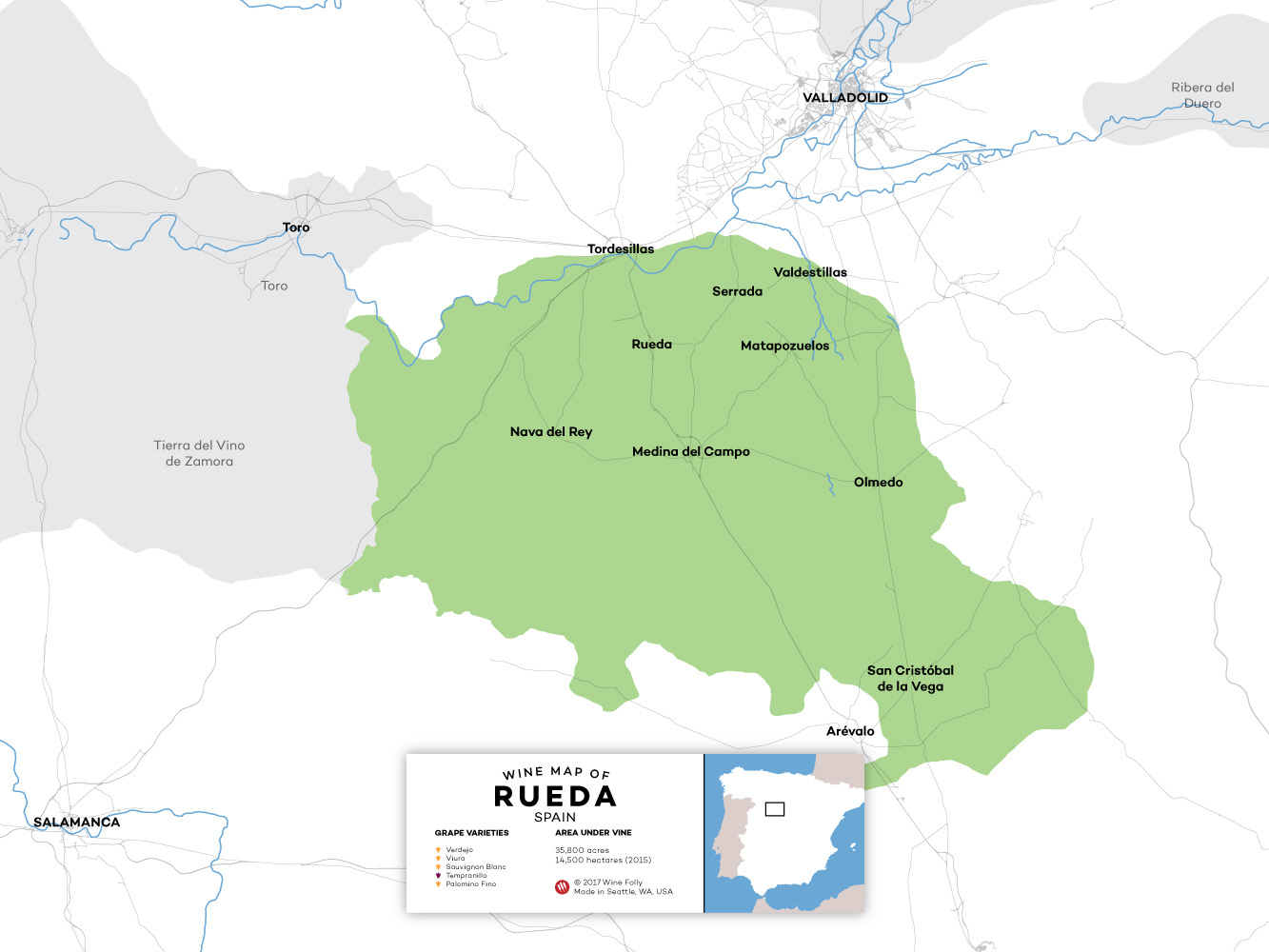Tannic Panic! Issue #109: Verdejo Hates Pants
Who doesn’t? So slap on your finest swim jorts and live the dream with our second poolside sipper pick of month - Verdejo
So what is Verdejo? A vegetable? Nay. ‘Tis but a humble grape. A Spanish white wine grape, to be exact.
It’s been around since before we figured out how to flush toilets and it will be here long after we forget.
We chose to feature Verdejo this week, because this Friday the 13th is not only a day of black cats and shattered dreams, angry axe hurling, sewing machine usage, garden weeding, and albino awareness – it’s also “WORLD VERDEJO DAY!!”
YIPPEE!!!!! As such, we’ve taken it upon ourselves to “bring you up to speed” on this precocious little berry.
VERDEJO de RUEDA
Verdejo is the proverbial flagship white grape of Spain’s Rueda region, from which some of Spain's most vibrant and aromatic white wines emerge. Brought to Spain from North Africa around the 11th century, the Verdejo grape has “thick skin” and drought resistance (LIKE ME!), which make it particularly well-suited to the region’s sandy and gravelly soils. These “thirsty” soils, combined with Rueda’s continental climate (hot, dry summers, cold winters, and dramatic day-night temperature swings) help Verdejo maintain its “hallmark” acidity, freshness and aromatic intensity.
Rueda itself is located in Castilla y León, northwest of Madrid, at elevations between 600 and 780 “meters.” As we’ve rambled about “many times before,” the high altitude slows grape ripening, preserving freshness and enhancing aromatic complexity. Blah, blah, blah, the region’s soils, rich in limestone and minerals, provide excellent drainage and contribute to the wines’ distinctive minerality and concentration. Gravelly soils near the Duero River are known for producing structured, age-worthy wines, while sandier areas tend to yield more aromatic, fruit-driven styles.
DID YOU KNOW… Sandy soils are typically much “less friendly” to Phylloxera (root lice), which means that some wine regions with predominantly sandy soils have been able to continue using own-rooted (original rootstock) vines for production. Older such regions, like Rueda, thusly have vines that predate the humble epidemic that wiped out most of the ungrafted European vines of yore.
Winemaking & Style
Verdejo was once primarily used for oxidized, Sherry-like wines. THANKFULLY that’s no longer the case. Modern winemaking in Rueda emphasizes freshness and purity. Most producers harvest at night to keep grapes cool and prevent oxidation, preserving the grape’s delicate aromatics. Stainless steel fermentation is common for clean, fruit-driven wines, while some producers also use oak, concrete, or amphora to add complexity and texture. Many wines are aged on their lees (like both of the wines we “explored” in today’s unhinged diatribe), which imparts a creamy mouthfeel and additional layers of flavor.
Verdejo from Rueda is typically dry, medium-bodied, and highly aromatic, with lively acidity and a subtle, characteristic herbal bitterness on the finish. Young, unoaked examples “burst” with notes of grapefruit, lime, melon, passion fruit, green apple, and fennel, while barrel-aged or lees-aged versions often develop richer, honeyed, and nutty complexities. Verdejo is often compared to Sauvignon Blanc because of its crisp acidity, citrus, and herbal notes, yet it is generally less overtly grassy and is distinguished by the almond and honey tones that develop with age.
Still unsure? Refer to the “Will I like Verdejo” checklist:
⚡ I enjoy zippy, citrusy white wines with bright acidity.
🌿 I like wines with herbal or grassy aromas (think NZ Sauvignon Blanc).
🍐 I'm “into” flavors like lime, green melon, pear, or almond.
🧀 I often pair white wine with sushi, savory fare, or light salads.
🕶 I prefer crisp and refreshing wines over buttery or oaky ones.
LEGAL NOTICE: Regardless of “how you scored” you are contractually obligated to try Verdejo after reading this blog post.
… AND NOW FOR THE REVIEWS (IN ORDER OF PRICE):
[CLICK HERE FOR A BREAKDOWN OF HOW OUR 100PT RATING SYSTEM WORKS]
1. 2023 Marques de Riscal Verdejo, Rueda /$12
Profile: Lemon, lime, grapefruit, green apple, seashell, crushed rock, basil, grass, white flowers, almond
Palate: Dry, high acid, medium- body, long finishCitrus, green fruit, flowers and nuts. What more do you need? For $12, this is a great alternative to a New Zealand Sauv Blanc if you are looking for something with a slightly more restrained acidity level (still high) and a bit more chalkiness. All around an extremely “wholesome experience”
Score Breakdown: Balance 36 / Aroma/Flavor 16 / Concentration 14 / Length 15 / Complexity 8 = 89 points (Z)
2. 2022 Ramon Bilbao Verdejo, Rueda / $12
Profile: Green apple, green pear, melon, passion fruit, peach, pineapple, lemon, lime, crushed rock, brine/ocean spray, almond, orange blossom
Palate: Dry, high acid, medium body, long finishLet’s just say, Mr. “Bilbao” brought his tropical fruit basket to the party with this wonderful “effort.”. This one was riper and surprisingly complex for such a youthful and lowly priced wine. This will definitely appeal to those of you who prefer more “tropical fruit-driven styles” mixed with ample “minerality.”
Score Breakdown: Balance 36 / Aroma/Flavor 16 / Concentration 14 / Length 15 / Complexity 9 = 90 points (Z)
Verdejo because we say so (and/or because it’s good).
Until next time, HAPPY DRINKING PEOPLE.
Cheers,
Isaac & Zach









Random, general question prompted by this weeks "unhinged diatribe": WTF is "minerality"? I highly doubt it has anything to do with mineral content, or that it's mechanistically related to the mineral content of the "soils" in which the grapes are grown. But feel free to prove me wrong.
Is "minerality" even a thing? "Enquiring minds" want to know.
We written and humorous e.g. LEGAL NOTICE: Regardless of “how you scored” you are contractually obligated to try Verdejo after reading this blog post.